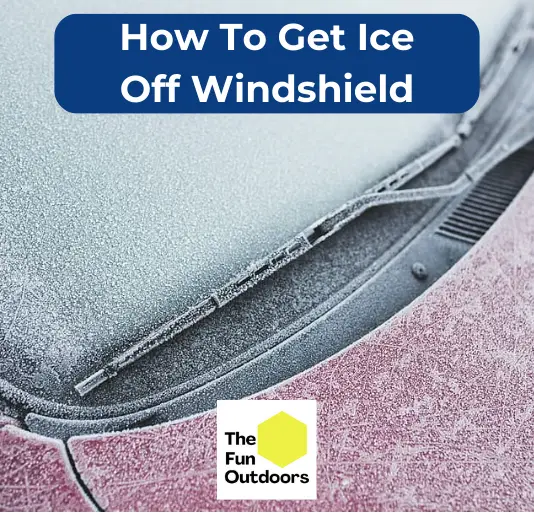When winter arrives, the sight of ice-covered windshields can be daunting for drivers. Removing ice from the windshield is not only important for visibility but also for safety. However, many people wonder how to get ice off a windshield fast and easy without causing damage.
There are several methods to remove ice from a windshield, but some are more effective than others. Check out the list below where we explore some effective ways to get ice off your windshield.
Understanding the Challenges of Ice on Windshield
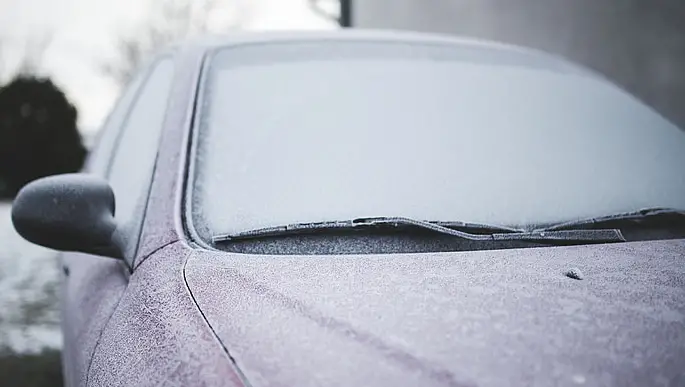
Winter weather can be a challenge for drivers, especially when it comes to dealing with ice on windshields. Thick ice and frost can make it difficult to see the road, and clearing it off can be a time-consuming and frustrating task.
Removing ice from a windshield can be particularly challenging if the ice is thick or has been left on the windshield for a long time. In some cases, minor ice can be removed with a simple ice scraper.
If the ice is thick or has been left on the windshield for a long time, it may be necessary to use a de-icer or other solution to help break up the ice before attempting to remove it with a scraper.
Using too much force or the wrong tools can cause cracks or chips in the glass. In some cases, these cracks or chips may be repairable, but in other cases, the windshield may need to be replaced entirely.
If you do notice cracks or chips in your windshield after removing ice, it’s important to have them repaired as soon as possible. Ignoring these issues can lead to further damage and may even compromise the safety of your vehicle.
Use Heat to De-Ice Your Windshield
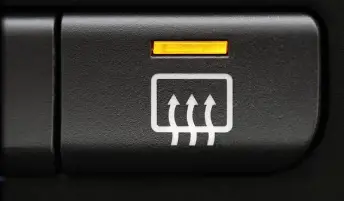
One of the most effective ways to get ice off your windshield is to use heat. There are several ways to do this, including using your car’s defroster, starting your engine, using a hairdryer (set on warm, not hot), or using warm water (not hot water).
To start, turn on your car’s defroster and let it run for several minutes. This will help warm up the windshield and loosen the ice.
Another option is to start your engine and let it run for a few minutes with your vehicle’s heat turned up. This will help warm up the interior of your car and begin to soften the ice on your windshield. Be sure to turn on the defroster to help speed up the process.
You can also use a hairdryer to melt the ice. Hold the hairdryer a few inches away from the windshield and move it back and forth until the ice melts. Be sure to use a low heat setting to avoid damaging the windshield.
Finally, some people use warm water to melt the ice. However, this can be dangerous as the sudden temperature change can cause the windshield to crack. It’s best to avoid using water altogether and stick to using heat from your car’s defroster, engine, or a hairdryer. If you must use water, use only lukewarm water and never hot water.
Use Scrapers to Remove Ice
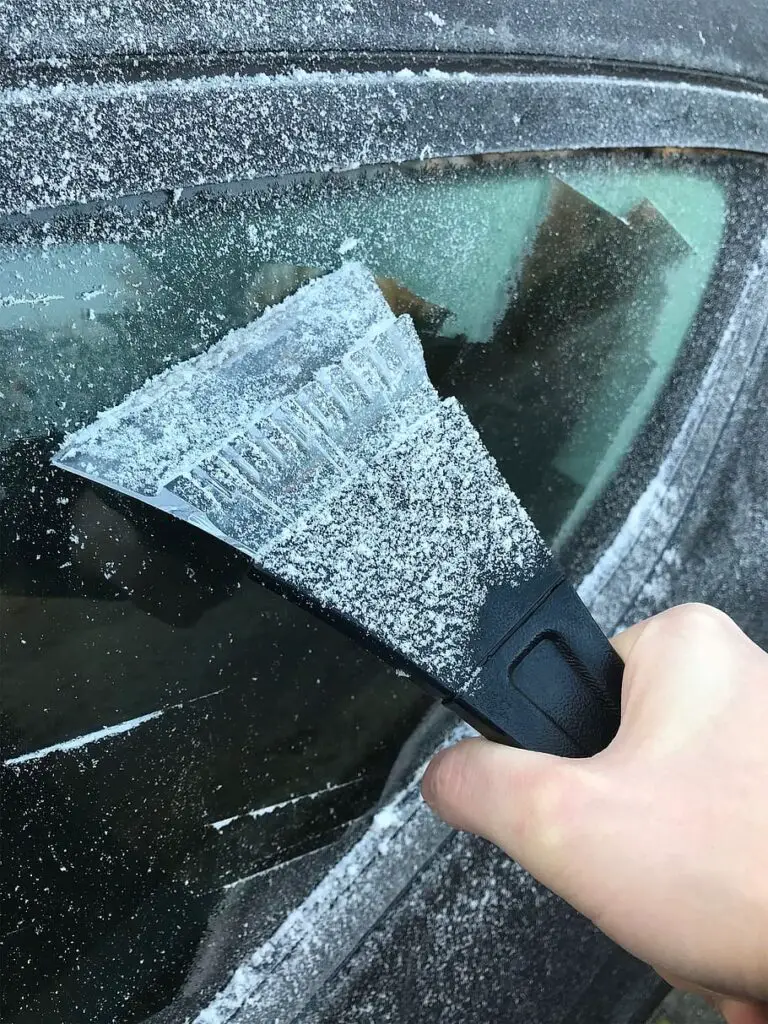
When it comes to removing ice from a windshield, using a scraper is one of the most common methods. A scraper is a handheld tool with a blade that is used to scrape ice off of the windshield. There are many different types of scrapers available, including ice scrapers, windshield scrapers, and snow brushes, to name a few.
To use a scraper, start by holding it firmly and at a comfortable angle. Then, use the blade to scrape the ice off of the windshield, starting at the top and working your way down. Be sure to use a consistent amount of pressure, and avoid using too much force, which can damage the windshield.
If the ice is particularly stubborn, you may need to use a credit card or other flat, sturdy object to help loosen it. However, be careful not to use anything that is too sharp or that could scratch the windshield.
After you have removed all of the ice, use a soft-bristled brush or squeegee to remove any remaining debris or water. This will help to ensure that the windshield is clean and clear, and will also prevent any streaks or smudges from forming.
Use A Winter Windshield Washer Fluid
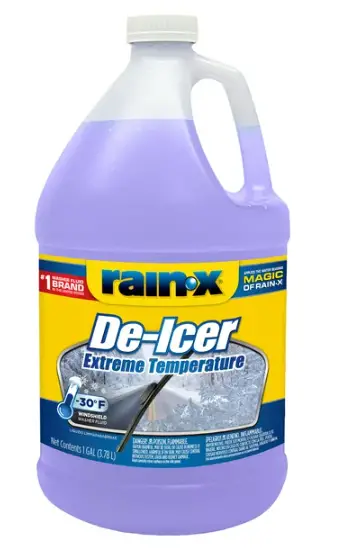
Using a winter windshield washer fluid is an effective way to prevent ice from forming on your windshield. This type of fluid is specially formulated to resist freezing in cold temperatures, making it an essential item for winter driving.
Before the weather turns cold, it’s recommended to fill your windshield washer reservoir with winter fluid or a “de-icer” solution that will not freeze and can aid in ice removal. Be sure to operate the washers long enough to flush any summer solution from the lines.
Winter windshield washer fluids contain a higher concentration of alcohol or methanol than regular washer fluids, which helps to lower the freezing point of the fluid. This allows the fluid to remain liquid in colder temperatures, preventing it from freezing on your windshield.
It’s important to note that not all winter washer fluids are created equal. Some may have a lower freezing point than others, so it’s important to check the label to ensure that the fluid is suitable for the coldest temperatures you may encounter.
In addition to preventing ice from forming on your windshield, winter washer fluids also contain cleaning agents that help to remove dirt, grime, and other debris that may accumulate on your windshield during winter driving. This can help to improve visibility and ensure that you have a clear view of the road ahead.
Try Commercial De-Icers
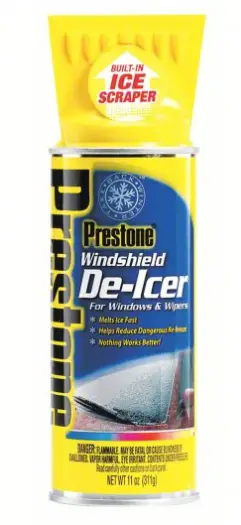
Commercial de-icers are another option to consider when trying to remove ice from a windshield. These products are designed to melt ice and prevent it from re-freezing. They come in different forms, such as sprays, liquids, and gels, and can be found in most auto parts stores and supermarkets.
When using commercial de-icers, it’s important to follow the manufacturer’s instructions carefully. Some products may require you to spray them on and wait a few minutes before wiping the ice away, while others may require you to apply them directly to the windshield and use a scraper to remove the ice.
One popular commercial de-icer is the Prestone Windshield De-Icer Spray. This product claims to melt ice fast and prevent it from re-freezing. It can be used on all types of vehicles, including cars, trucks, and SUVs. To use, simply spray the product onto the windshield and wait for the ice to melt. It’s important to note that this product should not be used on plastic or painted surfaces.
Another option to consider is the Rain-X De-Icer. This product is designed to quickly melt ice and frost from windshields, as well as prevent it from re-forming. It can be used on all types of vehicles and is safe for use on glass, plastic, and painted surfaces. To use, simply spray the product onto the windshield and wait for the ice to melt.
It’s important to wear gloves and protective eyewear to avoid skin and eye irritation when using commercial de-icers. Be sure to store these products in a cool, dry place and keep them out of reach of children and pets.
Homemade De-Icer Solutions
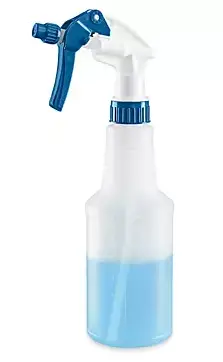
If you want to save money and avoid harsh chemicals, you can try making your own homemade de-icer solutions.
One popular homemade de-icer solution involves mixing rubbing alcohol and water in a spray bottle. Just mix two parts rubbing alcohol to one part water. The rubbing alcohol helps to melt the ice just like winter washer fluid does.
Another homemade de-icer solution involves using vinegar and water. Start by mixing equal parts vinegar and water in a spray bottle. You can spray this mixture on your windshield the night before or a few minutes before leaving, depending on how thick the ice is. The ice should then scrape off easily.
In addition to these two recipes, there are several other homemade de-icer solutions that you can try. For example, some people use saltwater. Not all homemade de-icer solutions will work equally well in all situations. Factors such as the temperature and thickness of the ice can affect how effective a particular solution is.
Try a few and see what works best for your situation, and then always have some on hand for future icy weather.
Dealing with Windshield Wipers and Ice
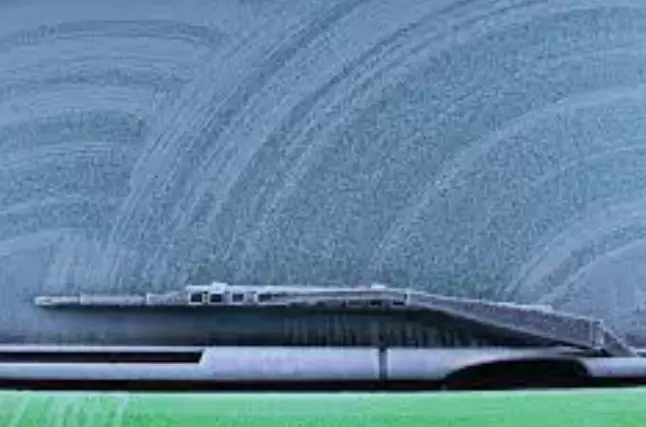
When it comes to removing ice from the windshield, dealing with windshield wipers can be a challenge. Ice can accumulate on the wiper blades, making it difficult for them to clear the windshield. Here are some tips to help you deal with windshield wipers and ice:
- Lift the wiper blades – Before a snowstorm or freezing rain, lift the wiper blades off the windshield to prevent them from freezing to the glass. This can also help to prevent damage to the wiper blades.
- Use de-icer spray – Spray de-icer on the wiper blades to help melt the ice. This can make it easier to remove the ice from the blades and prevent damage to the wiper blades.
- Warm up the car – Starting the car and letting it warm up can help to melt the ice on the windshield and wiper blades. This can make it easier to clear the ice from the windshield and wiper blades.
- Replace worn wiper blades – Worn wiper blades can make it difficult to clear the windshield of ice and snow. Replace worn wiper blades to ensure that they are working properly.
How To Prevent Ice On Windshield
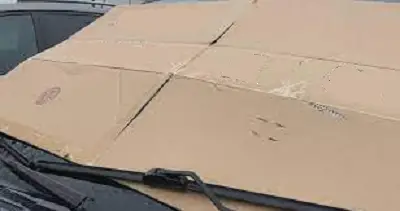
Preventing ice from forming on your windshield is the best way to avoid having to remove it in the first place. Here are some preventive measures that can be taken before the ice forms:
Keep Your Car In The Garage
Seems obvious, but if you have a garage, use it to park your car overnight. This will keep the car and the windshield protected from the elements.
If you don’t have a garage, consider investing in a windshield cover. This will help prevent ice from forming on the windshield and make it easier to remove any ice that does form.
Use Cardboard
If you don’t have a windshield cover, you can use cardboard to cover the windshield. Cut a piece of cardboard to fit the windshield and place it on the windshield before you go to bed. This will help prevent ice from forming on the windshield.
Wet Towels
Wet towels can also be used to prevent ice from forming on the windshield. Wet a few towels and place them on the windshield before you go to bed. The moisture from the towels will help prevent ice from forming on the windshield.
Use A Potato (Really)
Believe it or not, a potato can be used to prevent ice from forming on the windshield. Cut a potato in half and rub the cut side of the potato on the windshield. The potato will leave a thin layer of starch on the windshield, which will help prevent ice from forming.
By taking these preventive measures, you can save yourself time and effort in the morning by not having to remove ice from your windshield. Whether you use a garage, a windshield cover, cardboard, wet towels, or a potato, any of these measures can help prevent ice from forming on your windshield.
Avoid These Windshield Defrosting Techniques

When it comes to defrosting windshields, there are certain techniques that should be avoided to prevent damage to the glass. Here are some common methods that should be avoided:
Hot Water
Pouring hot water on a frozen windshield may seem like a quick fix, but it can cause the glass to crack or shatter due to the sudden change in temperature. It can also damage the paintwork of the car. It is recommended to use lukewarm water instead, but it may take longer to melt the ice.
Hair Dryers Or Heat Guns
Using a hair dryer or heat gun to melt the ice on the windshield can also be risky. The heat can cause the glass to crack or shatter, especially if the dryer or gun is held too close to the glass. It is best to avoid this technique altogether.
Scrapers With Metal Blades
Using a scraper with a metal blade to remove ice from the windshield can scratch the glass, leaving permanent marks. It is recommended to use a plastic scraper instead, which is less likely to cause damage.
Hacking Or Hammering At The Ice
Hacking or hammering at the ice on the windshield can also cause damage to the glass. It can create small cracks that can grow over time, leading to the need for a costly windshield replacement. It is best to avoid this technique altogether.
Check out our other RV window and windshield guides while you’re here:
How To Defog Your Windshield In Summer

